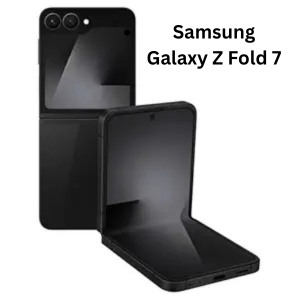Samsung Galaxy Z Fold 7 vs. Honor Magic V5: The Slimmest Foldable Yet?
Discover how the Samsung Galaxy Z Fold 7 claims the title of world’s slimmest foldable phone, surpassing the Honor Magic V5. Explore specs, design, and why this distinction matters in 2025’s foldable smartphone race.
Introduction
Foldable smartphones have evolved from futuristic concepts into practical, high-end devices that push boundaries in design and engineering. In 2025, attention has turned toward not just performance and innovation, but attaining the slimmest, most refined design. With Samsung’s launch of the Galaxy Z Fold 7, the South Korean giant claims to have surpassed the previously celebrated Honor Magic V5 for the coveted title of the “world’s slimmest foldable.” What does this mean for consumers and the foldable market? Let’s break down the new developments—with a focus on hands-on impressions, design specs, and practical implications for buyers.
The Race for the Slimmest Foldable: Specs Compared
Thickness & Build
Samsung Galaxy Z Fold 7 vs. Honor Magic V5
| Device | Thickness (Folded) | Weight | Notable Materials |
|---|---|---|---|
| Galaxy Z Fold 7 | 8.9 mm | 215 g | Armor Aluminum, Gorilla Glass |
| Honor Magic V5 | 8.8 mm | 217 g | Super Armored Glass, Metal Frame |
Despite Honor’s marketing claims, real-world side-by-side comparisons now show the Galaxy Z Fold 7 actually looks and feels slimmer, with a barely perceptible difference visible in hands-on videos—even though the Magic V5 edges out by 0.1mm on paper. Samsung’s engineering delivers a more streamlined, comfortably compact profile thanks to innovative hinge and panel designs.
Design Innovations: Samsung’s Approach
Samsung’s focus with the Galaxy Z Fold 7 has been clear: make foldables thin and practical for everyday use. The Z Fold 7 is not only the slimmest Galaxy Fold to date, but it also brings these improvements:
Armor Flex Hinge: Thinner, lighter, reinforced design
Advanced Materials: 50% increase in ultra-thin glass, new Gorillas Glass Ceramic 2
Weight Reduction: 215g (lighter than previous models and even some standard smartphones)
IP48 Rating: Improved dust and water protection for durability
The tactile feel, reinforced frame, and squarer edges catch immediate attention, making it easier to carry and hold, while ensuring the large, tablet-like screen inside is as immersive as ever.
Honor Magic V5: Competitive but Overshadowed?
Honor’s Magic V5 built its reputation around ultra-slim design, but Samsung’s rapid innovation has changed the landscape. The Magic V5 remains a strong competitor, sporting a 4.1 mm unfolded thickness and premium materials. However, early hands-on comparisons suggest the actual ergonomic feel and side profile no longer set the benchmark.
Hardware Showdown: Beyond Thinness
Display and Visual Experience
Galaxy Z Fold 7:
Main Display: 8-inch Dynamic AMOLED 2X, 2184 x 1968 px, 120Hz, 2,600 nits
Cover Display: 6.5-inch AMOLED 2X, 2520 x 1080 px, 120Hz
Honor Magic V5:
Main Display: 7.95-inch LTPO OLED, 2172 x 2352 px, 120Hz, 5,000 nits
Cover Display: 6.43-inch OLED, 2376 x 1060 px, 120Hz
Both offer stunningly bright, vibrant visuals and high-refresh gameplay, but Magic V5’s peak brightness is marginally higher, suiting extremely bright environments.
Performance and Power
Both phones are powered by the Snapdragon 8 Elite platform, with RAM up to 16GB and storage options reaching 1TB—ensuring lag-free multitasking and rapid AI computations.
Camera
Galaxy Z Fold 7: 200MP triple rear camera system, 10MP selfie cameras (front and inner), ProVisual AI enhancements for night and HDR video.
Honor Magic V5: Triple rear setup (50MP wide, 64MP telephoto, 50MP ultrawide), 20MP dual front cameras.
Samsung offers brighter, higher-resolution sensors and a comprehensive AI engine for content creation.
Battery Life
Z Fold 7: 4,400mAh, 25W fast charging, wireless support
Magic V5: 6,100mAh, 66W fast charging, 50W wireless
Honor leads in battery capacity and charging speed, suggesting longer use between charges—though Samsung’s lighter, thinner build may trade a bit of battery for portability.
AI, Software, and User Experience
Galaxy Z Fold 7 features One UI 8 and advanced Galaxy AI, enabling context-aware productivity, multitasking, and on-device intelligence directly tailored for foldable workflows. The integration seamlessly bridges work and play, offering an intuitive, flexible digital canvas that adapts across its dual displays.
Honor Magic V5 operates on MagicOS 9.1 atop Android 15. It also emphasizes flexible UI features for split-screen use, AI-driven camera performance, and productivity but lacks some of Samsung’s deep One UI integration and global ecosystem.
Why the “Slimmest” Title Matters
The competition to make foldables slimmer isn’t just about bragging rights: it addresses usability, portability, and mainstream appeal. A thinner, lighter foldable is simply easier to slip into pockets, carry, and use for extended periods—closing the gap between foldables and regular smartphones. Samsung’s engineering leadership signals a tipping point: foldables are no longer niche, but begin to feel truly everyday.
Conclusion: Is the Z Fold 7 the World’s Slimmest Foldable?
While measured specs still put Honor’s Magic V5 ahead by 0.1mm, hands-on analysis shows the Samsung Galaxy Z Fold 7 winning real-world slimness and handling. Combine that with advanced internals, AI smarts, camera leadership, and increased durability, and Samsung’s latest is not just slimmer—it’s a more practical, powerful foldable for 2025.
